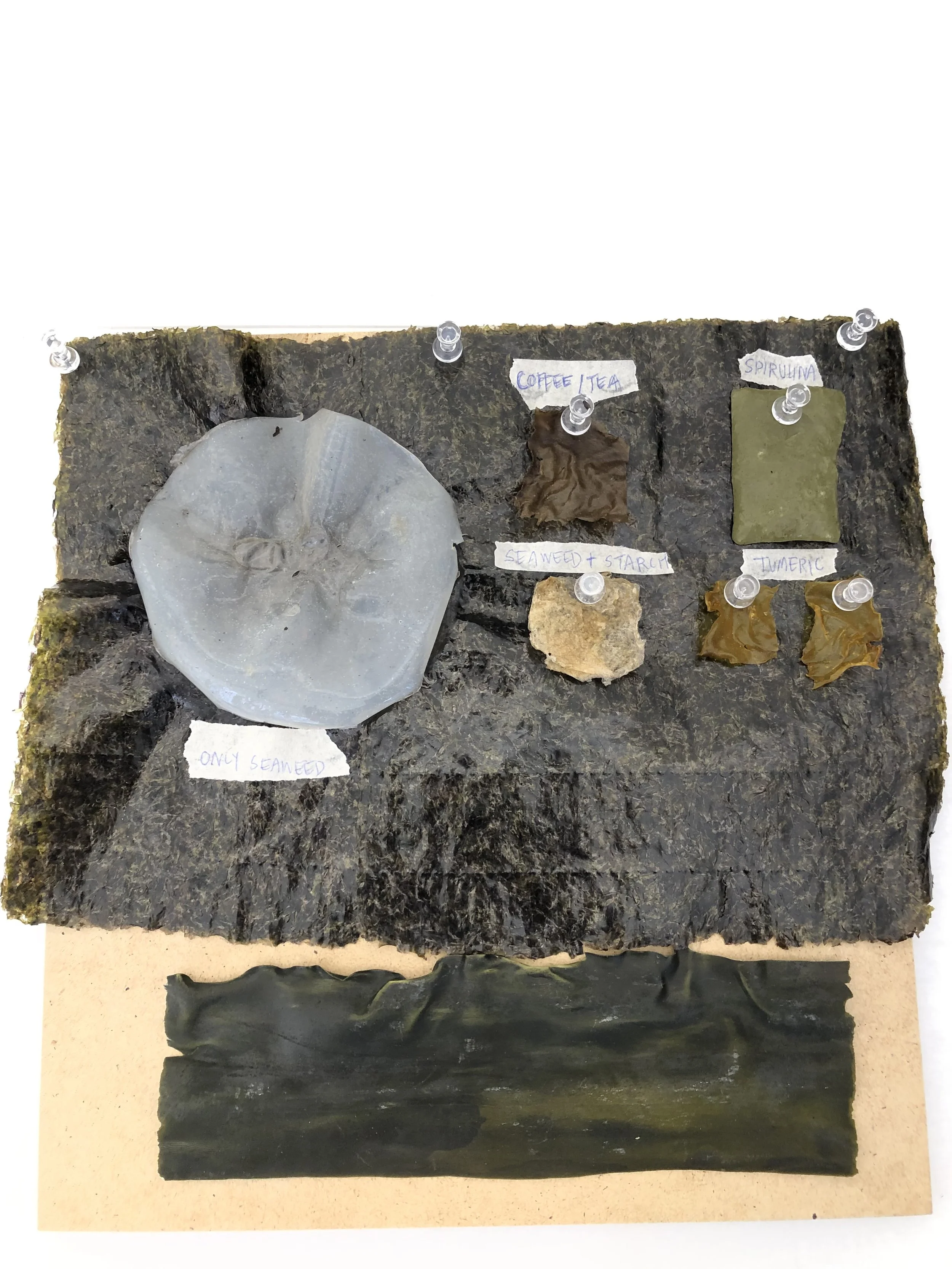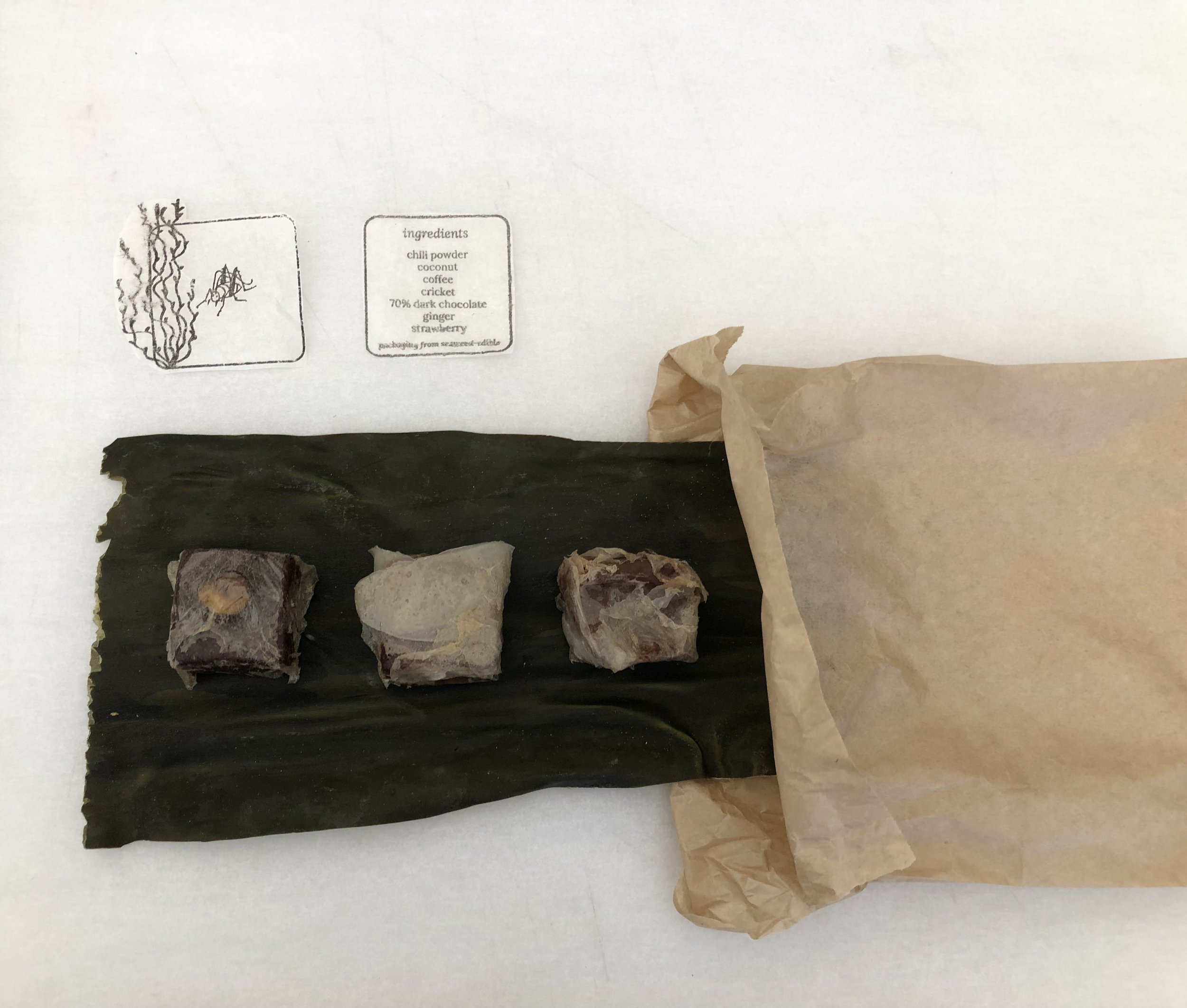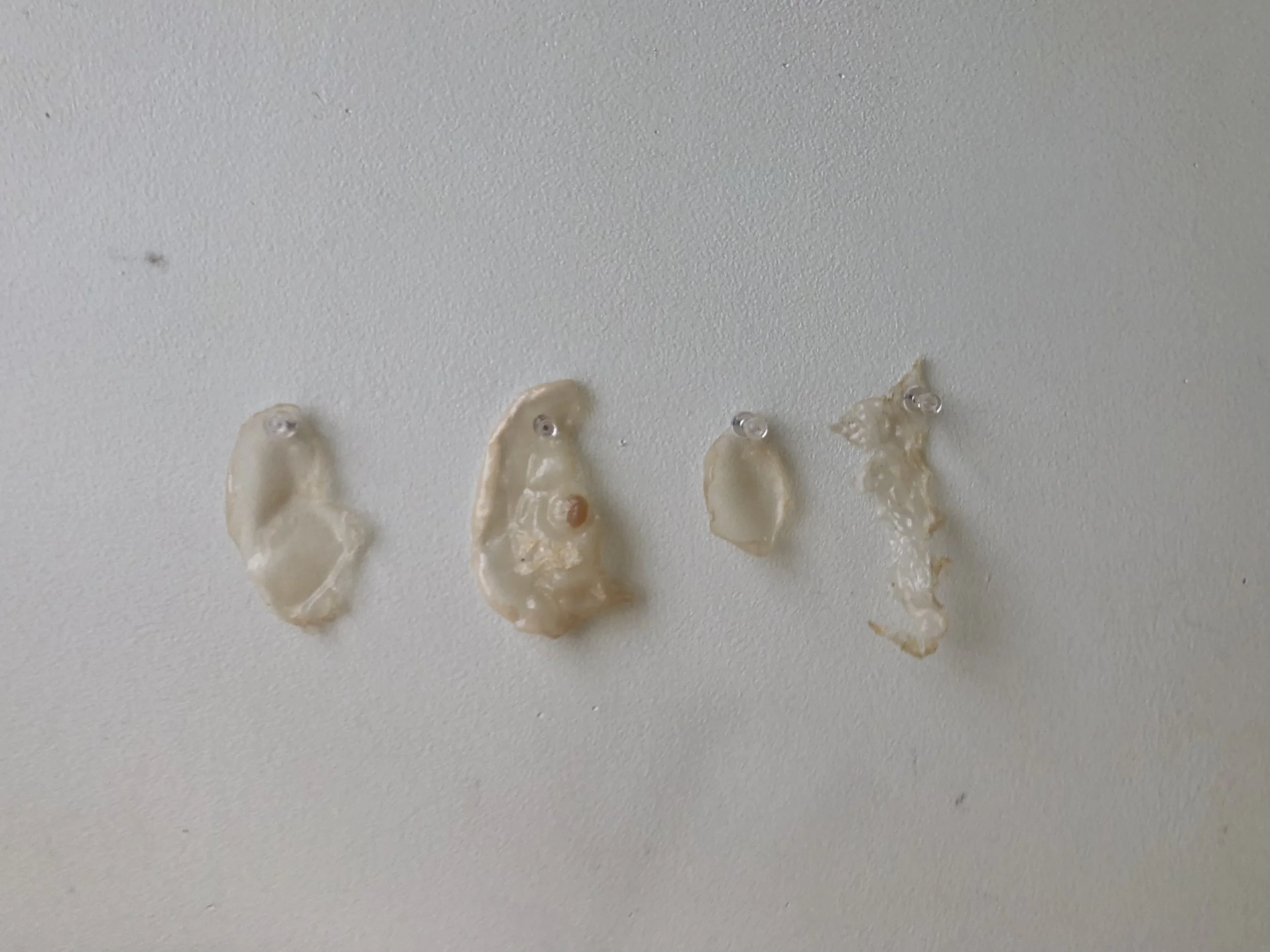sea futures: art book & seaweed packaging
For 6 months, I researched the properties of seaweed across history, art, culture, food systems, ecology, chemistry and design. As we move away towards mono-materials and embrace biobased material sources, what must we consider to avoid perpetuating material imbalances?
The result was naturally dyed, edible seaweed packaging for “future food” (cricket protein bars) and an art book archiving seaweed material findings.
The existence of symbiosis, the ability of different organisms to live together in union, is historically found across microbiomes in unlikely environments and has been a driving force in the evolution. The mechanics of how these relationships arise and how they impact developmental evolution are beginning to be researched in a closer context to understand how it not only frames microbial communities but the interactions of other life forms such as humans. While symbiotic relationships between lichen fungi and algae, reef-forming corals and single-celled algae and sea anemones and algae have been notoriously studied, the research of Lynn Margulis in the 1960’s opened the conversation surrounding symbiosis to further scopes in highly specific and conserved environments.
At the Museum of Natural History, John Burns and his team studies how green algae and spotted salamander have developed a form of symbiotic relationships called endosymbiosis, where one organism lives inside the other. They’ve found that green algae living inside individual embryonic salamander cells provide oxygen for the developing salamander while their nitrogen waste feeds the algaes metabolism. This occurs when algae enter the embryonic cells and turn off specific genes that import inorganic nutrients as they have found themselves in a densely nutrient rich environment. This relationship drastically differs from other endosymbiotic relationships in vertebrates as they are parasitic and cause diseases such a malaria. So why has algae been found as a central material in generally beneficial symbiotic relationships? A marine photoautotrophic organism from the kingdom of protists, it’s carbon capturing properties allow it to be used for filtering, fertilizing and extending the biogeochemical functions of hosts it comes into contact with. This makes algae a prime example of innovator organisms that employ evolutionary strategies of acquiring needed functions like nitrogen fixation, recycling and methanogenesis. The recognition of algaes diverse abilities to adapt in various environments has helped propel it into new iterations of symbiosis: between humans and the earth. It’s easily manipulated properties allow for it to be constructed into various metastable products that can replace human employed materials that harm the Earth such as methane based fuel sources and plastics. Alages’s future in biofuels or bioplastics depend on how we construct the relationship. We see it as the base material for a range of products from being used to power light sources, in straws, in fabrics to insecticides used to control cyanobacteria populations to reduce water pollution. While the word symbiosis is thrown around at any two things that can survive together, if we are to engineer artificial symbiosis, we must examine its evolutionary impacts just as nature does by attempting to quantify its material value.
Art and science have long grown in parallel to one another, both rooted in understanding nature as it continues to outlast and overtake man made creations. But in a time where we cannot depend on nature to continue to survive from anthropogenic induced harm, we need to implement joint systems in creating artificial symbiosis in an array of constructed environments as a baseline in serving planetary health models. German naturalist Alexander von Humboldt accredited his intellectual depths to his friends of other disciplines, who included Johann Wolfgang von Goethe, Simón Bolívar, Thomas Jefferson. In return, Humboldt’s work has been known to influence the writings of Darwin, Wordsworth, Goethe, Muir and Thoreau. As we continue to design systems of artificial symbiosis to harbor planetary health, recognizing the pioneers of the past who have connected science and art can feed future models of integration.










